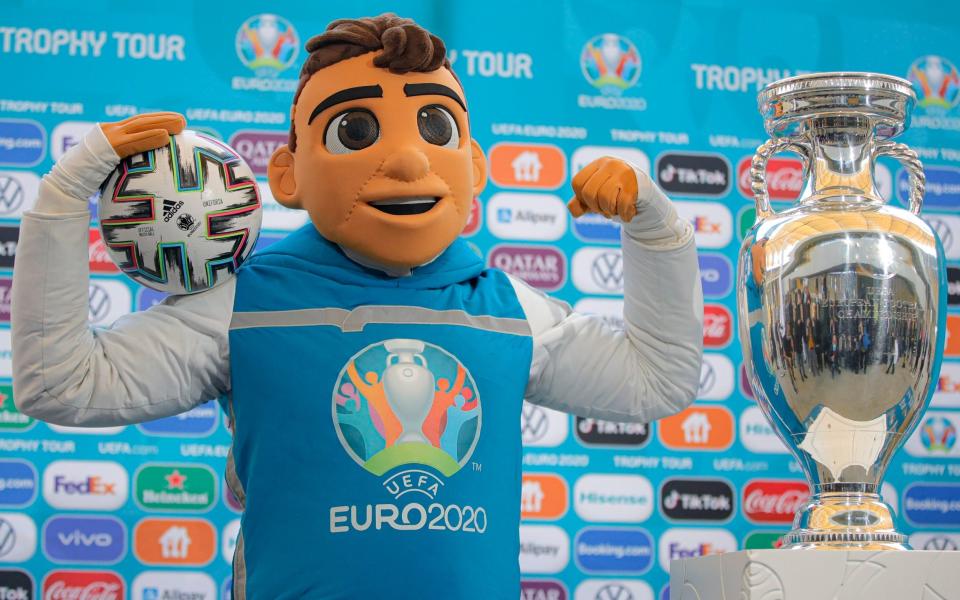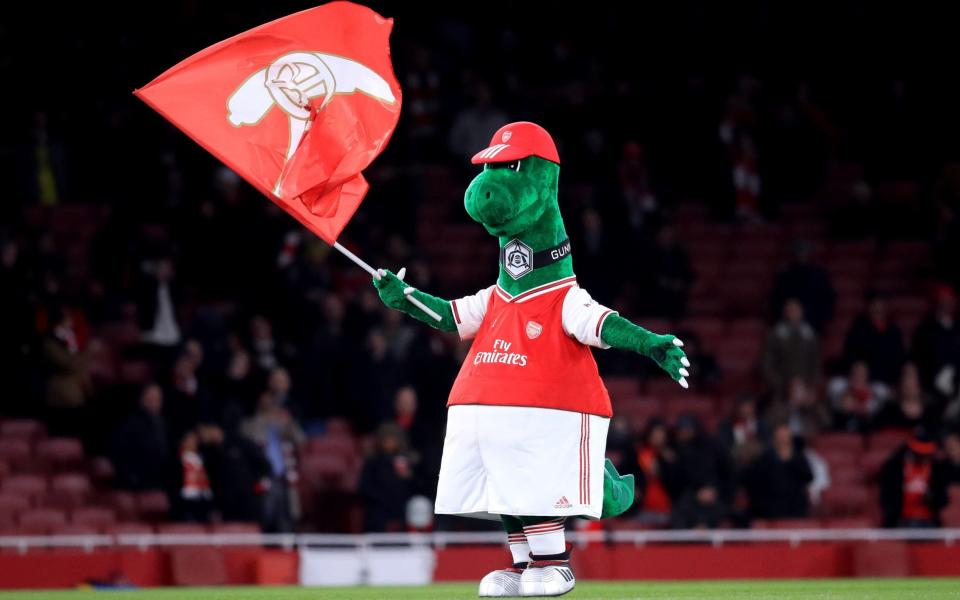The inglorious history of terrible mascots

Presidents Biden and Macron, the Queen and more than 100 world leaders will be joined at next week’s Cop26 by a rather unusual host. Greeting them – and all the associated delegates and officials – will be a giant grey seal, wearing a cheerleader’s dress and matching bobble hat and answering to the name of Bonnie.
In keeping with the net zero message of Cop26, Bonnie – unveiled this week by Glasgow City Council to patrol the city streets – is a recycled version of a mascot that has been used not once but twice before in local sporting events. The council suggests that this repurposing has the “added benefit of being a strong sustainability message in itself”.
Previously it (she, he, they? Pronouns are, as yet, unannounced) sported a running outfit and swimming costume, but at a cost of £1,645, Bonnie now wears a blue and lime-green dress and a Glasgow-emblazoned hat that screams fan looking for trouble at a Celtic v Rangers game. While the cost is small – in the context of the hundreds of millions that the UK Government is spending to host the conference – it’s expensive, it has to be said, for something so... cheap-looking.
To describe Bonnie’s reception as “mixed” would be kind. Some onlookers call it “demented”, while Labour’s shadow environment secretary described it “a big seal in a dress”. Others have pointed to its rodent-like features – unfortunate, given that Glasgow has reportedly suffered from a recent plague of more than a million rats. Indeed, the general consensus appears to be that Bonnie is a good argument for culling. Only the City Council has found something positive to tweet, dubbing it “seal-liously cute”.
Perhaps, the response to Bonnie is predictable, given that the history of mascots is one of division, derision, disasters and fights.
The original, and perhaps only, purpose of a mascot is to sell future landfills of cuddly toys, onesies and keyrings. Thus Cop26’s Bonnie fails miserably at the start, as the conference is marketing no official merchandise. Nor could it: flogging plastic tat made in China would be wildly off-message at an environmental conference.
So if Bonnie can’t sell stuff to go towards the millions of pounds spent on policing the city, what can or should our cheery seal do? It is left to us to imagine Justin Trudeau wearing a limited-edition enamel Bonnie pin.
Yet, Bonnie still fits key mascot design criteria. In order to be fashioned into a toy or sticker, a mascot needs to be a simple amorphous shape, a blob. It exists in its own universe and is unrecognisable as either fish or fowl, man or woman. Bonnie has a seal’s head but a person’s limbs, thereby fitting into the grand tradition of human-animal splicing of horror movies such as The Fly, The Human Centipede and Cats.

Psychologists say that we like our animals to have enough human characteristics to be appealing, but not so many that they cross the line into the uncanny valley of looking too much like us. The London 2012 Olympics sought to avoid this problem by creating two alien-like cyclops called Wenlock and Mandeville, said to have been born of two drops of molten steel. Amid the success of the games, these mascots were perhaps the only disappointment. The people of Vancouver, previous holders of world’s worst Olympic mascots, for Miga and Quatchi in 2010, rejoiced that they’d passed on the mantle. One Canadian writer, Harrison Mooney, described them as “phallic bugbears fitted out in foppish puffery”.
Bonnie is unlucky that anybody recognised it from previous excursions, given that another hallmark of the mascot is to be utterly unmemorable. Can you picture Skillzy, the Euro 2020 emblem from this summer? Uefa described it as “a larger-than-life character inspired by freestyling, street and panna culture”. The rest of us saw a top-knotted cross-eyed manchild. Of all the magic and tragic memories of the tournament, Skillzy was not one of them.
Mascots not only look bad, they behave badly, too. Those of football, both soccer and American, are particularly prone to getting into brawls and other misdemeanours. In 2010, the Cincinnati Bearcat mascot (a bearcat, natch) was arrested for disorderly conduct, having aggressively pelted snowballs at an opposition player. Cyril the Swan, of Swansea FC, butted outsized furry heads with Millwall’s Zampa the Lion, before ripping his whole head off. Wolfie of Wolverhampton Wanderers took on Three Little Pigs at Bristol City and all four were red-carded.
As frequent as the fights are the dangerous disasters that befall them. American Hockey’s Anaheim Ducks’ mascot, Wild Wing, jumped over a wall of fire while wearing a synthetic, highly flammable costume, with predictable results. It was left to cheerleaders to pull him out and douse the flames.
If mascots disappoint the general public, imagine the despair felt by those inside the suit. Ex-theme-park employee Bill Fink wrote a piece for the New York Post outlining the many humiliations suffered by those behind the furry mask. The costumes are shared so that they always reek of the sweat and breath of other wearers. In August, the humidity is so extreme that sweat blinds the wearer but they cannot wipe it away, given that they are forbidden to remove their heads in public. They’re not allowed to break character, even when being kicked in the shins by a toddler or verbally abused by a teenager.
I’ve only met one mascot, Arsenal’s legendary Gunnersaurus, Jerry Quy. I accompanied him to a classroom where he could change into his dinosaur outfit in order to entertain children at our primary school fair. He approached his role with admirable seriousness and stoicism, never complaining about the heat or the aggressive Spurs-supporting four-year-olds. His 27 years of service to the club were later rewarded by being sacked as part of Covid-related cost-cutting measures. There will now be a roster of people filling the role of Gunnersaurus and Arsenal has offered to include Quy on this list.

Quy, at least, had a vocation, having worked voluntarily for the first 14 years of his tenure. The vast majority of mascot dwellers are out-of-work actors with dreams of playing Hamlet. Their career disappointment must be shared by some of those who have designed them, artistic aspirations towards a Turner Prize replaced by a plush toy retailing at £18. Wenlock and Mandeville’s designer, Grant Hunter, was so stung by criticism of his creations that he publicly defended them as celebrating the “diversity and richness of modern Britain”.
There are rare tales of mascot triumph. H’angus the Monkey, of Hartlepool United, stood for mayor of the city in 2002, lightly campaigning while wearing the primate outfit in order to publicise the club. Much to his surprise, Stuart Drummond – Monkey’s alter ego – went on to beat the Labour favourite and was re-elected twice, allowing him to swap his job in a call centre for the newly created position with its attached £61,000 salary.
Rather than laughing at mascots, then, we should wonder at what dreams lurk below the foam and fake fur heads and what they could achieve when unleashed. With Boris Johnson already making pessimistic noises about the prospects of a meaningful agreement on climate change, Bonnie the seal might even be more effective than our elected officials.


